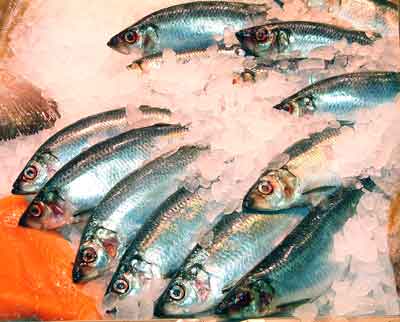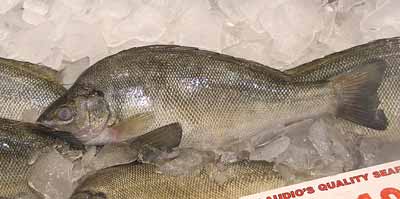
When herrings are fished from the sea they gleam and shine with such beauty that this name is used for them around the coasts of Britain.
The silver ear fungus is a translucent white jelly fungus that grows on trees, used in Chinese cuisine. (If gathering mushrooms you must be absolutely certain what you have before you eat them as many are very poisonous.)
An eel found in the rivers and bays of the north eastern coast of North America.
An American hake with a range from southern Newfoundland down to North Carolina traditionally landed at Gloucester in Massachusetts. It is often called "whiting" for market.
A variety of grey mullet (US: striped mullet). It is a silver, shoal-living fish pointed with dark grey which feeds on seaweed and plankton near the muddy bottom in estuaries and coastal waters. This can effect its flavour. However, a good grey mullet, caught in clean water, is round-bodied and has creamy white flesh and good flavour with good keeping capabilities. It must be thoroughly scaled before eating. Varieties are found all over the world. The roe is used for taramasalata, botargo, boutargue.

Also known as bream or grunter, this freshwater fish is found throughout the Murray-Darling river system. It is happiest in fast running water, particularly in rapids. Fresh, this is a good fish to eat.
The silverside (US: round cut) is a cut from the rump or thigh of beef at the back of the hind limb. It is the lean outside thigh muscle. It is all right for roasting, if basted constantly, but is excellent if braised or pot-roasted.
Atlantic silverside or sandsmelt. A slender, round, oily marine fish which grows up to18 cm (7”). It is long with a translucent green back and silver bands lengthways along the sides and caught in estuaries along the coast of the eastern United States. It is usually deep-fried or grilled. In the United States these are often called whitebait. When tiny they are treated in the same way as whitebait in the UK.